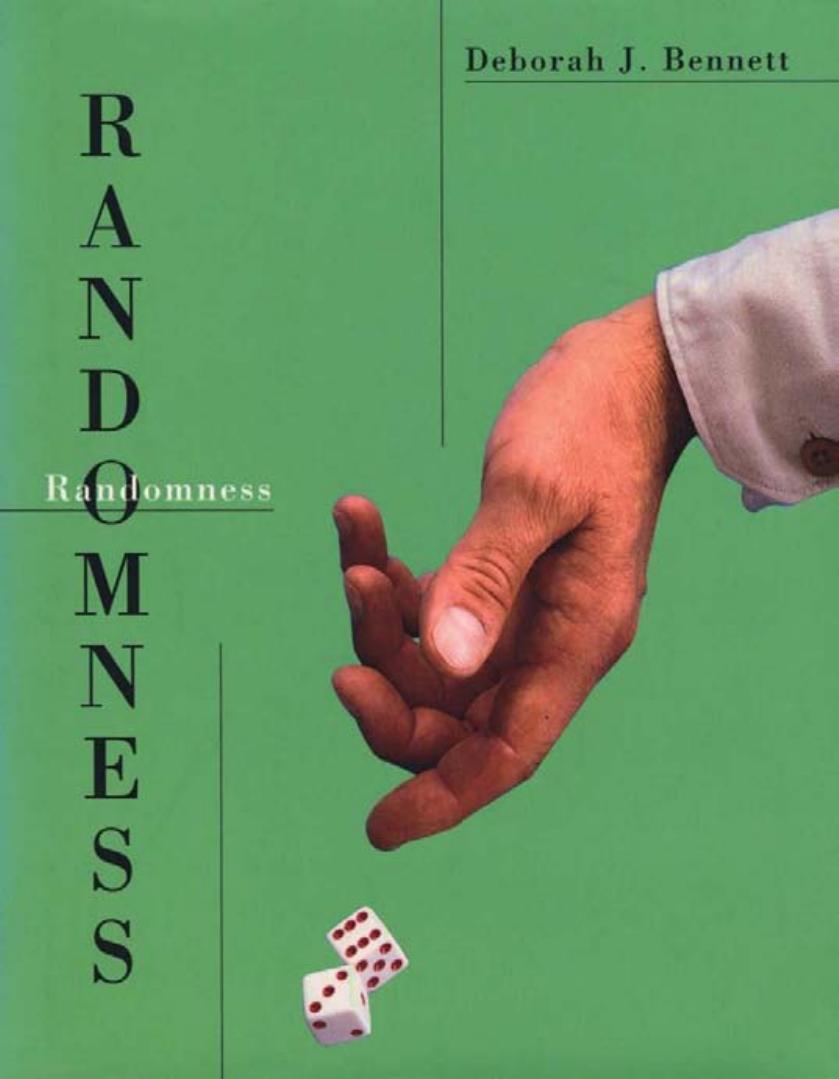Randomness by Deborah J. Bennett

Author:Deborah J. Bennett
Language: eng
Format: mobi, pdf
Published: 2009-09-06T16:45:00+00:00
Weldon used these artificial data as a teaching tool, since it was so easy for an audience to see how a pattern could arise from even random data like dice throws. Figure 19 displays Weldon's experimental results. The columns are labeled 0 through 12, indicating outcomes possible on the first throw, and the rows are labeled 12 through 0, the outcomes possible on the second throw. The numbers in the cells of the table represent the total counts of particular outcomes on the first and second throws. We can clearly see the strong pattern in this data. When the number of dice showing four or more spots on the first throw is small, the number of dice showing four or more spots on the second throw tends to be small; when the number of dice showing four or more spots on the first throw is large, the number of dice showing four or more spots on the second throw tends to be large. This correlation accounts for the pattern we see in the table: the largest counts of trials appear to cluster from the lower left corner of the table to the upper right corner.
In 1907 A. D. Darbishire performed an interesting series of experiments in an "attempt to make the phenomenon of correlation clear to an audience previously unfamiliar with it."" Darbishire expanded on Weldon's experiment in order to illustrate thirteen levels of correlation. Just as Weldon had done, Darbishire rolled twelve dice and recorded the number of dice showing four or more spots. Some of the dice were rerolled and, along with those left on the table, constituted the second throw, where once again the number of dice showing four or more spots was recorded. As in Weldon's experiment, the rolls were correlated, since the dice left on the table constituted part of both throws.
Download
This site does not store any files on its server. We only index and link to content provided by other sites. Please contact the content providers to delete copyright contents if any and email us, we'll remove relevant links or contents immediately.
| Anthropology | Archaeology |
| Philosophy | Politics & Government |
| Social Sciences | Sociology |
| Women's Studies |
The remains of the day by Kazuo Ishiguro(8817)
Tools of Titans by Timothy Ferriss(8215)
Giovanni's Room by James Baldwin(7188)
The Black Swan by Nassim Nicholas Taleb(7010)
Inner Engineering: A Yogi's Guide to Joy by Sadhguru(6723)
The Way of Zen by Alan W. Watts(6504)
Asking the Right Questions: A Guide to Critical Thinking by M. Neil Browne & Stuart M. Keeley(5631)
The Power of Now: A Guide to Spiritual Enlightenment by Eckhart Tolle(5604)
The Six Wives Of Henry VIII (WOMEN IN HISTORY) by Fraser Antonia(5394)
Astrophysics for People in a Hurry by Neil DeGrasse Tyson(5130)
Housekeeping by Marilynne Robinson(4336)
12 Rules for Life by Jordan B. Peterson(4249)
Double Down (Diary of a Wimpy Kid Book 11) by Jeff Kinney(4204)
The Ethical Slut by Janet W. Hardy(4172)
Skin in the Game by Nassim Nicholas Taleb(4161)
Ikigai by Héctor García & Francesc Miralles(4123)
The Art of Happiness by The Dalai Lama(4063)
Skin in the Game: Hidden Asymmetries in Daily Life by Nassim Nicholas Taleb(3929)
Walking by Henry David Thoreau(3892)
